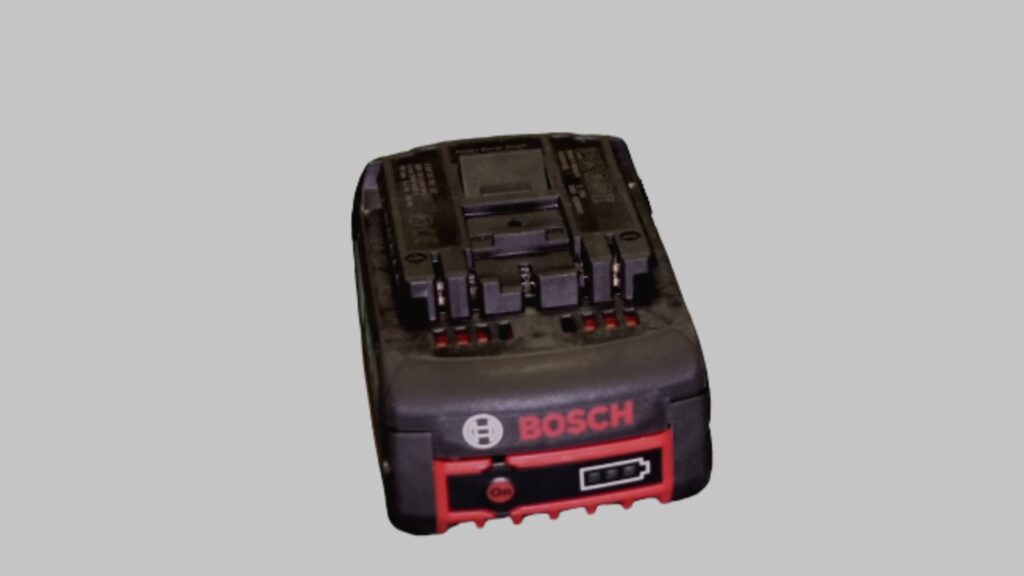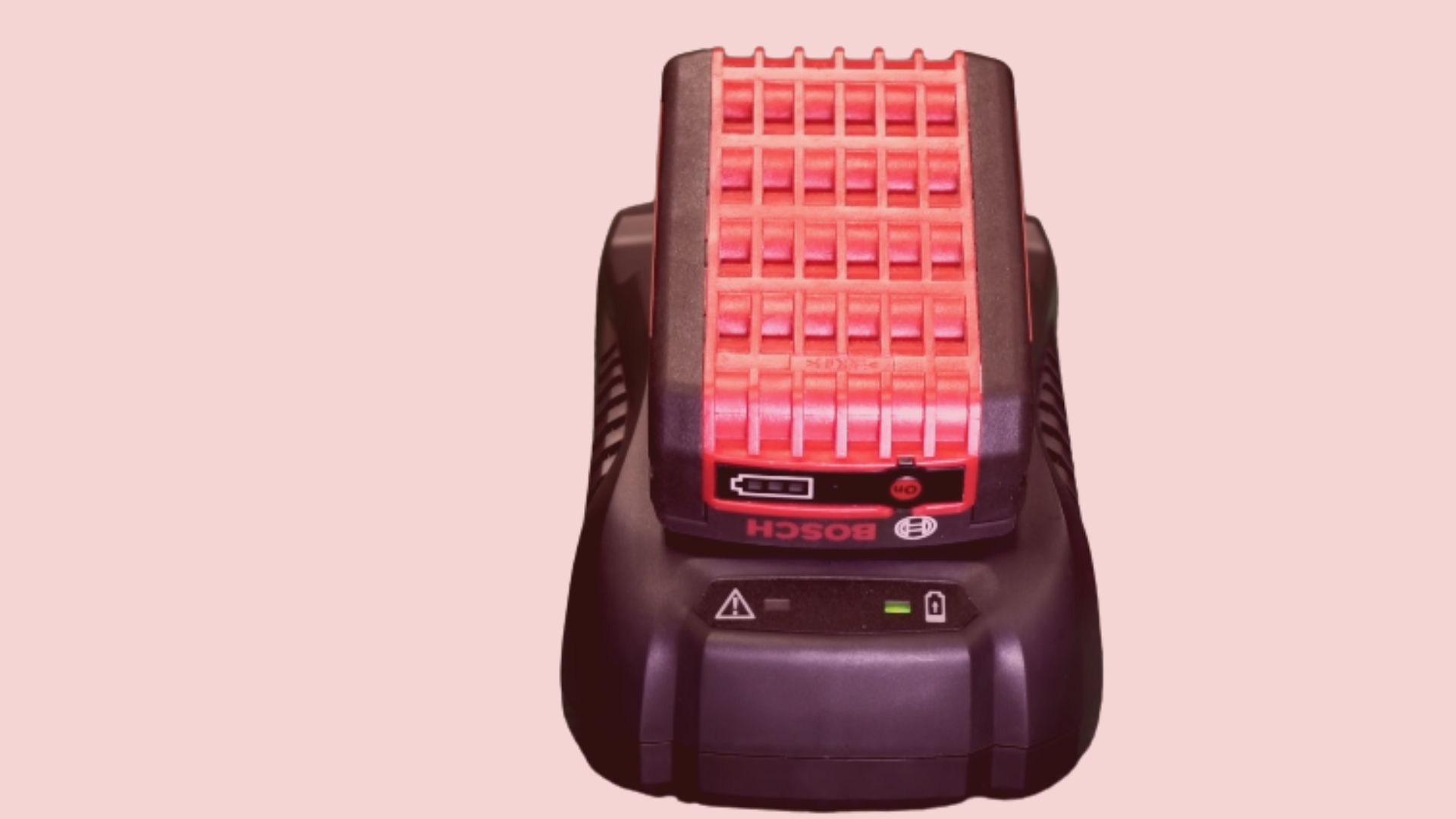Bosch chargers can stop working for many reasons. As the guide below will soon explain, some of those reasons are innocuous. You can resolve them without technical assistance.
Bosch Battery Charger Not Working – Why?
1). Look for signs of damage, such as burn marks. Surges and short circuits from your electrical system can harm the charger. Do you smell something burning? What about leaks? Damaged chargers and batteries are dangerous.
2). Inspect the device for loose connections. Loose connections attract arcing, and arcing can damage the charger. While the possibility of a fire is slight, you cannot completely discount this risk. Make sure every component is sitting securely in its slot.
3). Is the battery secure in the charger? Some chargers require the consumer to apply firm pressure to secure the battery in the slot. If you don’t, the battery’s loose connection will prevent charging.
Sometimes, the battery is loose because the charger’s contacts are worn out or damaged. In other cases, the battery’s contacts are at fault. Contacts on chargers and batteries break and bend all the time, especially if you store these devices poorly.
Shake the battery. If it feels loose in the slot, apply gentle pressure. You don’t want to damage the contacts by pushing too hard. The manual will warn you if the battery is supposed to have a certain amount of play while inside the charger.
4). Some chargers are simply old. You’ve had them for too long, and they’ve reached the end of their lifespan. Batteries have similar limitations. What does the manual say about the product’s life expectancy? If you’ve crossed this threshold, don’t be surprised that your chargers and batteries have malfunctioned.
You can extend a charger’s lifespan by performing extensive repairs. But a new charger is the safest option.
5). You have a temperature problem. It is either too high or too low. Chargers generate a certain amount of heat when they pour electricity into a battery. However, this should make the battery warm, not hot. A warm charger is equally harmless.
But if these devices are too hot for you to touch, something has gone wrong. The temperature is a vital aspect of a battery and charger’s operations. A study in the Journal of Energy Chemistry noted that voltage and temperature shape a battery’s response. Batteries can easily rupture. This is how some fires start.
Experts encourage consumers to apply caution for this reason. Arizona State University was looking at future solutions for batteries. They pointed out that batteries in a parked car can degrade because temperatures can exceed 150 degrees.
This is why so many manufacturers include safety mechanisms that prevent a charger from working when the temperature exceeds a specific threshold. Stanford researchers took things a step further in 2016 by introducing lithium-ion batteries that deactivate in response to extreme temperatures.
If the charger won’t work, check the temperature of both the charger and the battery. Don’t force a hot battery or charger to work. The results could be disastrous.
6). Do you trust the power source? Is it reliable? Maybe the wall outlet is dead. Are you using an extension cord? Try using a wall outlet or a second extension cord. You can’t expect the charger to work when it doesn’t have a reliable power supply.
7). Is the charger wet? It stops working if moisture invades the battery’s most sensitive components because the dampness will cause a short.
How To Fix A Bosch Charger That Won’t Charge?

- Clean the contacts. Some people blame damaged contacts for a charger that won’t work when the contacts are simply dirty. Remove the debris to solve this problem.
- If the charger is too hot, let it cool down before you make another attempt to charge the battery. Do the same for an overheating battery.
- Test the charger with a multimeter. If the device is dead, replace it. Get a new charger if the old one keeps overheating.
- Test the battery with a multimeter. If the battery is dead, replace it. You should also replace a battery that keeps overheating.
- Tighten loose connections. Electronic Repair Faq has pictures of a charger they repaired by soldering the connections on the board. But unless you know how to handle a soldering station, you should hire a technician.
- Fix or replace a defective fan.
- Let a wet charger dry. Keep it disconnected from the power supply. Disassemble the device and leave it in a warm location. Keep in mind that water causes corrosion. Consult a technician. They will tell you whether or not your charger is beyond repair.
- Check the outlet for damage and replace it where necessary.
- Is the outlet turned on? Some chargers fail to work because the power supply is off.
- Use the wall outlet instead of an extension cord.
- Check the power cord for fraying, and replace it where necessary.
- Replace old chargers that reach the end of their lifespan. Do the same for older batteries.
- Make sure the charger and battery’s voltage ratings are compatible.
Pay attention to the error codes. Some chargers use LEDs to communicate error codes. The error codes will tell you what is wrong. If you have a manual, use it to interpret the error codes. The manual will also show you how to fix the problem the error codes have highlighted.
How Do I Know Whether Bosch Battery Charger Is Charging Or Not?
- You leave the battery in the charger for hours, but when you take it out and insert it in the relevant tool, the tool won’t work. When you test the battery, the multimeter shows no charge.
- Chargers have lights that either flash or illuminate when the charging process starts. If the battery is not charging, those lights won’t flash or illuminate.
- The charger won’t start. The lights showing that the Bosch charger is active won’t come on.

